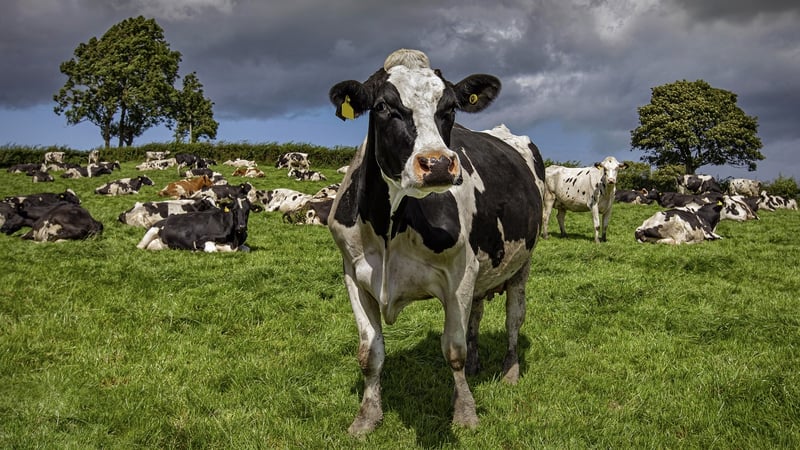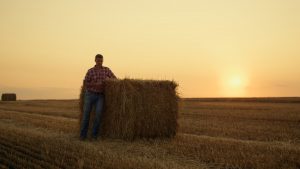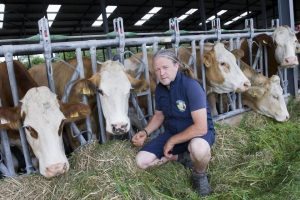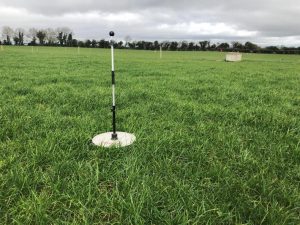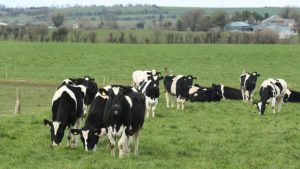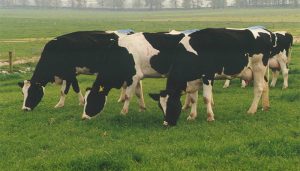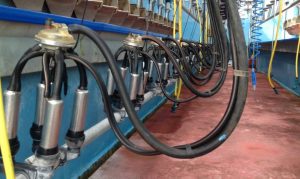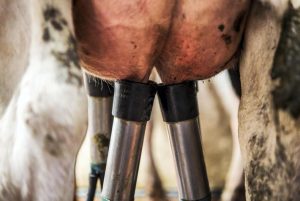
New figures on farming incomes show that all farm systems recorded their lowest average incomes in several years in 2023, with dairy farm incomes down 69% and tillage farm incomes down 71% on 2022.
The latest farm income figures, published in the Teagasc National Farm survey, were described by Teagasc Director Frank O’Mara as “dismal”.
The report found that dairy and tillage farms in particular experienced steep reductions in farm income in 2023, after a bumper year in 2022.
This was attributed to a sharp decline in milk and cereal prices, and lower production volumes, in a period of stubbornly high input prices.
In 2023 the average dairy farm income fell to just under €49,500 – a decrease of 69%, or in excess of €105,000 – compared to the 2022 level.
Tillage farm income was down 71% in 2023 relative to 2022, taking the average income down to just €21,400, a decrease of over €52,000.
The average sheep farm income was down 22% at €12,600 in 2023 – a decrease of almost €3,500. The average income for cattle farms fell to just under €12,600 in 2023, a decline of 14% on the 2022 level.
The report’s results are representative of almost 85,000 farms in Ireland.
According to the report’s authors, there was a sharp downturn in dairy commodity prices internationally in 2023, which in turn affected Irish farm milk prices.
Meanwhile, favourable production conditions for cereal crops at the global level led to a global harvest which put downward pressure on international and Irish grain prices.
In 2023, there were some challenging weather conditions in Ireland over the second half of the year, with high levels of rainfall having an adverse impact on tillage yields, grazing conditions and silage production.
Across the key farm output categories in Ireland, the report’s authors said that milk and cereal prices performed worst in 2023, with milk prices down 28% in 2023 compared to 2022, while cereal prices decreased by 30% to 35%.
Senior Research Officer at Teagasc, Emma Dillon, told RTÉ’s News at One the steep drop in incomes had been anticipated due to the sharp drop in milk and cereal prices on the market and lower production levels overall.
Ms Dillon said that there was a stubbornly high input price environment and the issues were exacerbated by the adverse weather.
She said the survey figures had to be taken in the context of 2022, when there was a high inflationary environment in 2022 for both input and output costs.
In 2023, output prices did not keep pace with input prices and that created difficulties across all systems, but the dramatic fall was very evident in dairy and tillage farms, Ms Dillon added.
The record high incomes in 2022 were due to high global commodity prices that were above average and so Ireland saw the reverse of that happening in 2023, she explained.
On tillage farms, farmers saw weather woes which made for a difficult harvest and delayed planting, as well as downward pressure on the global cereal prices which caused a lot of problems.
On dairy and grassland systems, poor weather made production costs higher as animals were housed earlier and grass did not grow as well, she added.
Ms Dillon said Ireland is exposed more than other countries in markets such as dairy, as the demand was driven by China in recent years, and last year this had somewhat of a fall off.
Speaking about 2024, she said that Teagasc hoped to see some recovery but the weather poses challenges this year again.
But she added that the 2023 report shows a move to viability and sustainability and also off farm income sources, which creates a buffer in terms of alternative income sources to sustain a farm that is not viable.
In a statement, the Department of Agriculture said it “acknowledges that 2023 was an extremely challenging year”.
“Recent geopolitical events and volatility in international markets, resulting in increased input prices and decreases in output prices, contributed to Family Farm Incomes falling for the first time in five years.
“With income on dairy farms almost doubling to record highs in the period 2021 to 2022, average income in 2023 is estimated to have decreased significantly.
“This significant decrease in income was the same for tillage farmers, who have faced very challenging growing conditions on top of increased input prices,” it said.
The Department said it will “continue to support farmers as it continues to make payments under the €10 billion CAP Strategic Plan” and thourgh “specific supports where required.
“This support is reflected in the increased importance of direct payments in the 2023 farm income figures,” it added.
Govt ‘should be ashamed’ of income drop – ICMSA
The President of the Irish Creamery Milk Suppliers Association has said the Government “should be ashamed” of the drop in farm incomes revealed in the Teagasc National Farm Survey.
Denis Drennan said the “Government’s inaction in the face of the collapse in farmer incomes and the value of the agriculture sector had moved past ‘just’ hapless confusion and contradictions must now be deemed deliberate and a matter of State policy”.
“Try and imagine any other occupation in Ireland working a 60-hour week where a Government agency produces figures showing a fall in income in just a single calendar year of almost 70%?
“Try and imagine a situation in, for instance, the public sector where any group of workers were asked to just shrug and accept a fall in income of even 7% – still less 70%,” Mr Drennan said.
He said farmers are losing their livelihoods and the Government just moves on preparing the next round of ‘Green’ regulations or “useless and half-baked schemes aimed at non-commercial farming and funded at the expense of the farmers”.
Meanwhile, the Irish Farmers’ Association (IFA) said that the survey’s findings are a “stark reminder of the fragility of farming”.
The IFA is due to meet with the Minister for Agriculture for a pre-Budget meeting where it has claimed it would push for the “maximum level of supports” for farmers.
“No sector fared well; tillage and dairy took the biggest hits in terms of overall drop,” IFA President Francie Gorman said.
He added: “Across all enterprises, the pressure on farm families is proving very challenging.
“The incoming EU Commission should see this as a wake-up call. Expecting food production to continue as normal under these conditions is just not sustainable.”
You can now read the most important #news on #eDairyNews #Whatsapp channels!!!
🇺🇸 eDairy News INGLÊS: https://whatsapp.com/channel/0029VaKsjzGDTkJyIN6hcP1K
